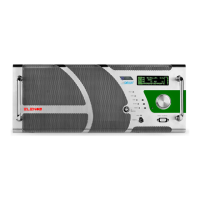17
fig.a
fig.b
Safety
3.2 First aid
This paragraph is NOT a comprehensive guide to first aid procedures; it is intended as a
summary to be used as a reference.
It is the duty of all staff using this device to perform appropriate first aid procedures in
order to prevent avoidable deaths.
3.2.1 Treatment of electrical burns
3.2.1.1 Extensive burns and skin cuts
• Cover the area with a clean sheet or cloth.
• Do not break blisters, remove tissue, remove adhered particles of clothing, or apply
any ointment.
• Treat the victim for shock as required.
• Arrange transportation to a hospital as quickly as possible.
• If arms and legs are injured, keep them raised.
WARNING:
lf medical help will not be available within one hour and the victim is responsive and
has no bouts of sickness, administer them a salt and soda solution: 1 full teaspoon of
salt and half teaspoon of sodium bicarbonate for every 250 ml of tepid water (neither
hot or cold), allow the victim to sip it slowly about 4 times (1/2 glass) over a period of
15 minutes.
Discontinue if the victim suffers bouts of sickness. Do not administer alcohol.
3.2.1.2 Less severe burns (1st and 2nd degree)
• Apply cool (not ice cold) compresses using the cleanest available cloth.
• Do not break blisters, remove tissue, remove adhered particles of clothing, or apply
any ointment.
• If necessary, put on clean and dry clothes
• Treat the victim for shock as required.
• Arrange transportation to a hospital as quickly as possible.
• If arms and legs are injured, keep them raised.
3.2.2 Treatment of electric shocks
3.2.2.1 If the victim is unresponsive
Place victim flat on his back on a hard surface
A) Airways (fig. a):
• if the victim is not responsive open the airways
• push the forehead back
• open the mouth if necessary
• check breathing
B) Respiration (fig. b):
• if the victim cannot breathe, perform artificial respiration
• incline the head
• close the nostrils
• place your mouth on the victim’s mouth
• perform 4 quick blows
• remember to start breathing immediately

